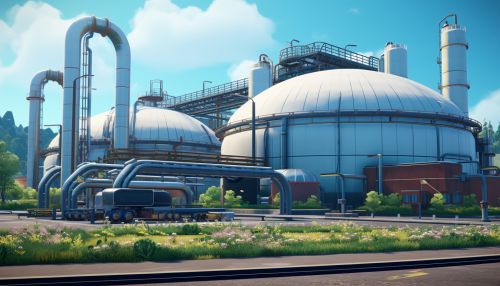Bayer process
Introduction
The Bayer process is an industrial procedure, widely used in the extraction of aluminium oxide (also known as alumina) from bauxite ore. Named after its inventor, Austrian chemist Karl Josef Bayer, the process was patented in 1887 and remains the primary method for producing alumina from bauxite worldwide.


History
The Bayer process was developed by Karl Josef Bayer, who was working in Saint Petersburg, Russia, at the time. Bayer was trying to find a more efficient method for extracting alumina from bauxite, which was becoming increasingly important due to the growing demand for aluminium. His method, patented in 1887, revolutionized the aluminium industry and is still used today, with only minor modifications.
Process Overview
The Bayer process involves four main steps: digestion, clarification, precipitation, and calcination.
Digestion
In the digestion stage, the bauxite ore is ground and mixed with a hot solution of sodium hydroxide, typically at a temperature of 150 to 200 degrees Celsius. This process dissolves the aluminium compounds in the bauxite, forming a solution of sodium aluminate.
Clarification
The resulting slurry from the digestion stage is then sent to the clarification stage, where the undissolved waste, known as red mud, is separated from the sodium aluminate solution. The red mud is discarded, while the clear sodium aluminate solution is sent to the next stage.
Precipitation
In the precipitation stage, the sodium aluminate solution is cooled, and fine particles of alumina are precipitated out. This is typically achieved by seeding the solution with fine particles of alumina, which act as a catalyst for the precipitation process.
Calcination
The final stage is calcination, where the precipitated alumina is heated to a high temperature, typically around 1000 degrees Celsius. This process drives off the remaining water and converts the alumina to a stable, crystalline form that is ready for use in aluminium production.
Environmental Impact
While the Bayer process is efficient and effective, it also has significant environmental impacts. The most notable of these is the production of red mud, a waste product that contains high levels of toxic heavy metals. Disposal of red mud is a major challenge for the aluminium industry, and various methods have been proposed and implemented, including storage in tailings dams, use in building materials, and deep-sea dumping.
Future Developments
Research is ongoing to improve the Bayer process and reduce its environmental impact. One area of focus is the development of methods to extract valuable elements from red mud, such as rare earth elements, which could provide an additional revenue stream for aluminium producers and reduce the volume of waste requiring disposal.
